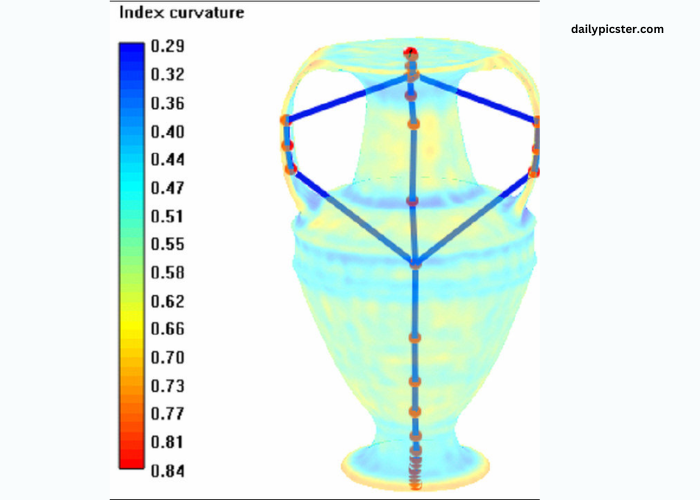In the ever evolving realm of data analysis and statistical assessment, one term that frequently arises is the Indice de Forme. Although it might sound complex at first, the concept behind this index is both intriguing and highly valuable. Whether you’re a data scientist, a business analyst, or simply someone looking to understand the dynamics of a dataset, this article will provide you with a comprehensive understanding of the Form Index and its significance in the world of data analysis.
What is the Form Index?
The Form Index, often referred to as the Indice de Forme in French, is a statistical metric used to evaluate the shape or distribution of data. This index plays a crucial role in various fields, including finance, engineering, and data science. It is particularly useful when you need to assess the symmetry, skewness, and kurtosis of a dataset.
Why is the Form Index Important?
Understanding the Form Index is crucial because it helps analysts and researchers gain deeper insights into their data. Here’s why it is important.
- Symmetry Assessment: The Form Index can help determine whether a dataset is symmetric or skewed. In a symmetric dataset, the values are evenly distributed on both sides of the mean, creating a bell-shaped curve. On the other hand, a skewed dataset has an uneven distribution, with a longer tail on one side. Recognizing the symmetry of your data is essential for making accurate assumptions and predictions.
- Kurtosis Analysis: Kurtosis measures the tailedness of a dataset. A high kurtosis indicates that data is heavily tailed, meaning it has extreme values, while a low kurtosis implies the data has a more moderate spread. Knowing the kurtosis of your data is essential for understanding the potential presence of outliers and making reliable inferences.
- Data Transformation: The Form Index can help in deciding whether data transformation is necessary. If your data exhibits significant skewness or kurtosis, transforming it (e.g., through logarithms or square roots) can make it more amenable to statistical analysis, improving the validity of your results.
- Investment and Finance: In the world of finance, the Form Index is used to assess the distribution of financial assets and their associated risks. Understanding the shape of return distributions is crucial for risk management and portfolio optimization.
- Engineering and Quality Control: Engineers often employ the Form Index to assess the distribution of product specifications and ensure they meet quality standards. It helps in identifying any deviations or defects in the manufacturing process.
Practical Applications of the Form Index
The Form Index finds applications in various fields, including.
- Stock Market Analysis: Investors and financial analysts use the Form Index to assess the risk and return distributions of stocks. It helps in identifying stocks with extreme price movements and tail risk.
- Quality Control: Manufacturers use the Form Index to monitor the quality of products. Deviations from a symmetric distribution in product specifications can indicate defects or process issues.
- Climate Science: Climate scientists use the Form Index to analyze temperature and precipitation data to understand the distribution of weather patterns and assess the impacts of Risk Management: In the insurance industry, the Form Index is used to assess the risk associated with various insurance products. It helps in determining appropriate premiums and managing risk exposure.
Tips for Using the Form Index Effectively
Here are some tips for effectively using the Form Index in your data analysis.
- Combine with Other Metrics: While the Form Index provides valuable insights into data distribution, it’s often beneficial to combine it with other statistical measures, such as skewness, kurtosis, and histogram analysis, for a comprehensive understanding.
- Data Transformation: If your data has a significant skewness or kurtosis, consider data transformation techniques to make it more suitable for analysis. Common transformations include logarithmic and square root transformations.
- Visualize Your Data: Creating histograms, box plots, and probability plots can help you visualize the distribution of your data. These visual aids complement the numerical insights provided by the Form Index.
- Consider the Context: Interpret the Form Index in the context of your specific analysis. What may be a significant skew in one dataset might be perfectly acceptable in another, depending on the research question and goals.
Conclusion
The Form Index, or Indice de Forme, is a powerful statistical tool that provides critical insights into the shape and distribution of data. Its ability to assess symmetry, skewness, and kurtosis makes it invaluable in various fields, from finance and manufacturing to climate science and risk management. By understanding the Form Index and its implications, you can make more informed decisions and draw meaningful conclusions from your data analysis. Whether you’re an investor, scientist, or quality control manager, the Form Index is a valuable addition to your analytical toolkit, unlocking the potential of your data like never before.



